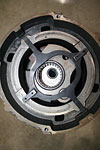
Figure 1: Scrolls are now in their fifth generation. (Courtesy of Emerson Climate Technologies.)
This is the first in a series of three articles covering the scroll compressor. This first article will cover the history of the scroll compressor along with the scroll compressor operation. The second article will cover the scroll compressor advantages and the modulating scroll compressor. The third article will cover digital capacity control for scroll compressors and scroll compressor protection.
The concept of compressing a gas by turning one scroll against another around a common axis isn’t new. Scroll compressor technology has been around for 100 years, but it did not become commercially available and cost effective until the mid-1980s. Today, it continues to be even more fine-tuned and is available in many applications.
The major hurdle in making the scroll compressor a viable product was achieving a balance between the need for high volume precision manufacturing, and the ability to consistently achieve high performance and efficiencies, low sound levels, and great reliability.
In fact, it is the scroll compressor’s ability to reach higher levels of SEER that helped guide the industry through government-mandated regulations. Every central split cooling system manufactured in the United States today must have a SEER of at least 13. Federal law as of Jan. 23, 2006, mandated this energy requirement. Also, with the phaseout of R-22 just around the corner, manufacturers of HVACR equipment are looking for energy-efficient methods to apply to their equipment to meet these new energy requirements.

Figure 2: One of the two spiral-shaped scrolls in a scroll compressor. (Courtesy of Ferris State University.)
This federal mandate impacts 95 percent of the unitary market in the United States, which is about 8 million units at this time of writing.
Because of this new federal mandate of 13 SEER, most air conditioning and heat pump manufacturers are looking for more efficient evaporator and condenser designs, more efficient compressors like the scroll compressor, and more efficient fan motors, along with more sophisticated control systems to meet this new energy-efficiency requirement.

Figure 3: The other of the two spiral shaped scrolls in a scroll compressor. (Courtesy of Ferris State University.)
COMMERCIAL COOLING
The next step for the scroll compressor was for use in commercial cooling equipment. A major development for commercial scroll compressors has been modulating technology. Modulating technology is able to maintain ideal comfort levels in buildings like churches, where rooms can be empty for hours and then suddenly fill to capacity. Modulation technology is accomplished in several ways. Some high-end systems now have communication systems onboard that enable components to talk to each other.
Figure 4: The orbiting motion is created from the centers of the bearings. (Courtesy of Ferris State University.)
REFRIGERATION
The next major application for the scroll compressor was in refrigeration. The scroll compressor’s reliability and durability proved itself in refrigeration applications. It is used in walk-in coolers, reach-ins, and distributed refrigeration systems. Beyond coolers and freezers, the scroll compressor has found its way into soft-serve ice cream machines, frozen carbonated beverage machines, and more. Scroll compressors are also being utilized in cryogenic equipment, Magnetic Resonance Imaging (MRI) machines, and even some dental equipment.Scroll compressor operation is relatively simple. Two spiral-shaped scrolls fit inside one another (Figs. 2 and 3). The two mating parts are often referred to as involute spirals. One of the spiral-shaped parts stays stationary, while the other orbits around the stationary member. The orbiting motion is created from the centers of the journal bearings and the motor being offset (Fig. 4).

Figure 5: The orbiting motion causes continuous crescent-shaped gas pockets to be formed. (Courtesy of Emerson Climate Technologies.)
Several crescent-shaped gas pockets are compressed at the same time, which provides for a smooth and continuous compression cycle. Thus, the scroll compressor conducts its intake, compression, and discharge phases simultaneously.

Figure 6: The gas pocket is fully compressed and is discharged out of a port of the non-orbiting scroll member. (Courtesy of Ferris State University.)
Unlike piston-type compressors, the scroll compressor has no re-expansion of discharge gas which can be trapped in a clearance volume. This is why piston-type compressors are often referred to as “variable compression ratio” compressors. This contributes to low volumetric efficiencies in piston-like compressors.
Publication date:09/01/2008


Report Abusive Comment